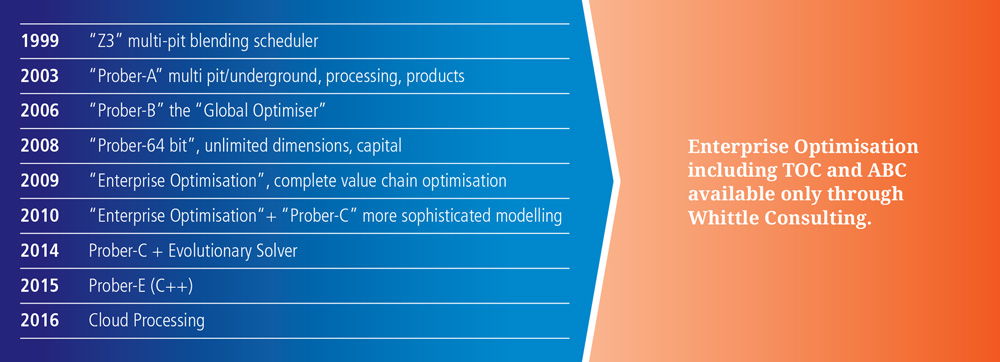The Whittle Story
A Live Book
We welcome feedback or contributions to add to our Live Book. Click here for more info
What's New
Adapting to COVID
by Gerald Whittle
Whittle pivots to drone technology
by Whittle Consulting
Working with Jeff Whittle
by Chris Wharton
Section 1
Introduction
 We warmly welcome you to the Whittle Story! The history of the Whittle Mining Optimisation Software is a uniquely Australian story of intellectual creativity, invention and a great deal of hard work. It is also a human story, which centres around one special individual, Jeff Whittle, his family and a growing number of talented individuals who have developed a new industry out of a wonderful idea. Written in the voices of the people who have participated, the “Live Book” is our attempt to record for posterity this special story.
We warmly welcome you to the Whittle Story! The history of the Whittle Mining Optimisation Software is a uniquely Australian story of intellectual creativity, invention and a great deal of hard work. It is also a human story, which centres around one special individual, Jeff Whittle, his family and a growing number of talented individuals who have developed a new industry out of a wonderful idea. Written in the voices of the people who have participated, the “Live Book” is our attempt to record for posterity this special story.
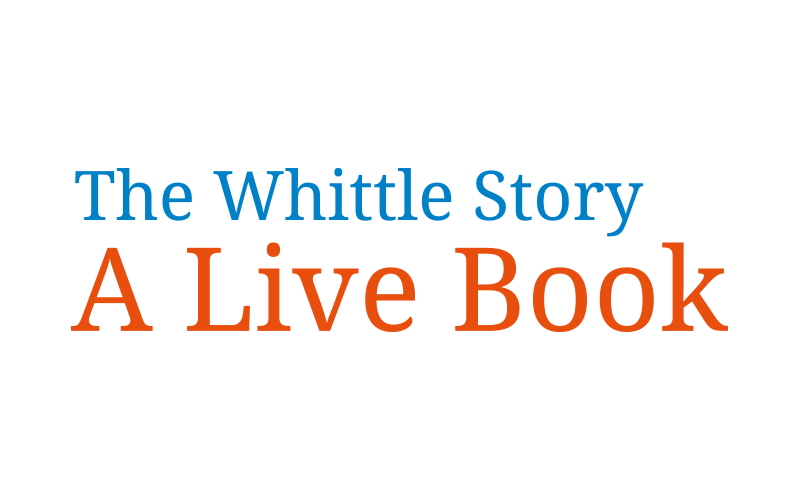
The genesis of the creation of the Whittle Live Book is a story in itself. In 2018, the idea of creating a method to capture the history relating to the Whittle story was first mooted. From the outset, it was decided that the ‘Live Book’ should be prepared in a non-traditional format. And so, this is the ‘story behind the story’ of how the Whittle Live Book came into being.
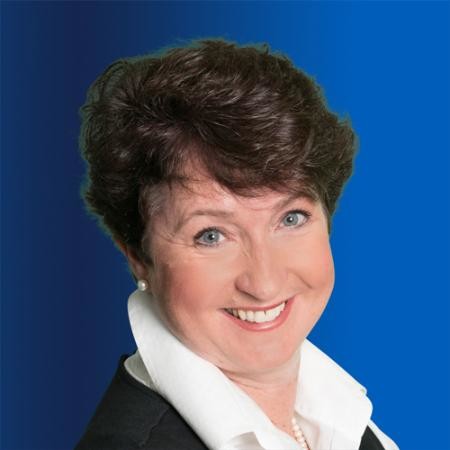
In 2017, it was decided that the story behind Whittle Programming and Whittle Consulting should be documented for posterity. Over many months, Ruth Whittle, Stephanie Jones and Narelle Crothers worked collaboratively to create the concept, structure and design framework behind this idea. A range of individual authors were contacted to ask if they would contribute stories that in their own words would illustrate their part of the Whittle story. Stephanie and Narelle then worked closely with a design company to turn a good idea into reality. This story is an attempt to capture the background to this part of the story.

Mankind has always attempted to obtain the most value out of scarce mineral resources. Traditionally, this was achieved by maximising the physical amount of a resource obtained from a mine.
Over the past 30 years, Whittle Consulting has revolutionised the mining industry. We have pioneered the realisation that maximising the economic value of mineral resources, through the creation of early cash flow, is the true way to maximise the business of mining. Understanding the simple concept that money has a time value has turned the mining industry upside down. The effects are so profound that we are telling this story…
Click here to watch a video explaining Whittle Integrated Strategic Planning
 Melbourne, 1961
Melbourne, 1961
The story behind Jeff & Ruth Whittle’s move to Australia makes fascinating reading. Triggered by rising Cold War political tensions & the real possibility of nuclear war, Jeff & Ruth realise they need a safer environment for their growing family. In a real life “closing doors” moment, they decide to make the move to a new life in Australia. This piece written by Jeff Whittle is a captivating story about contemporary politics and courage.
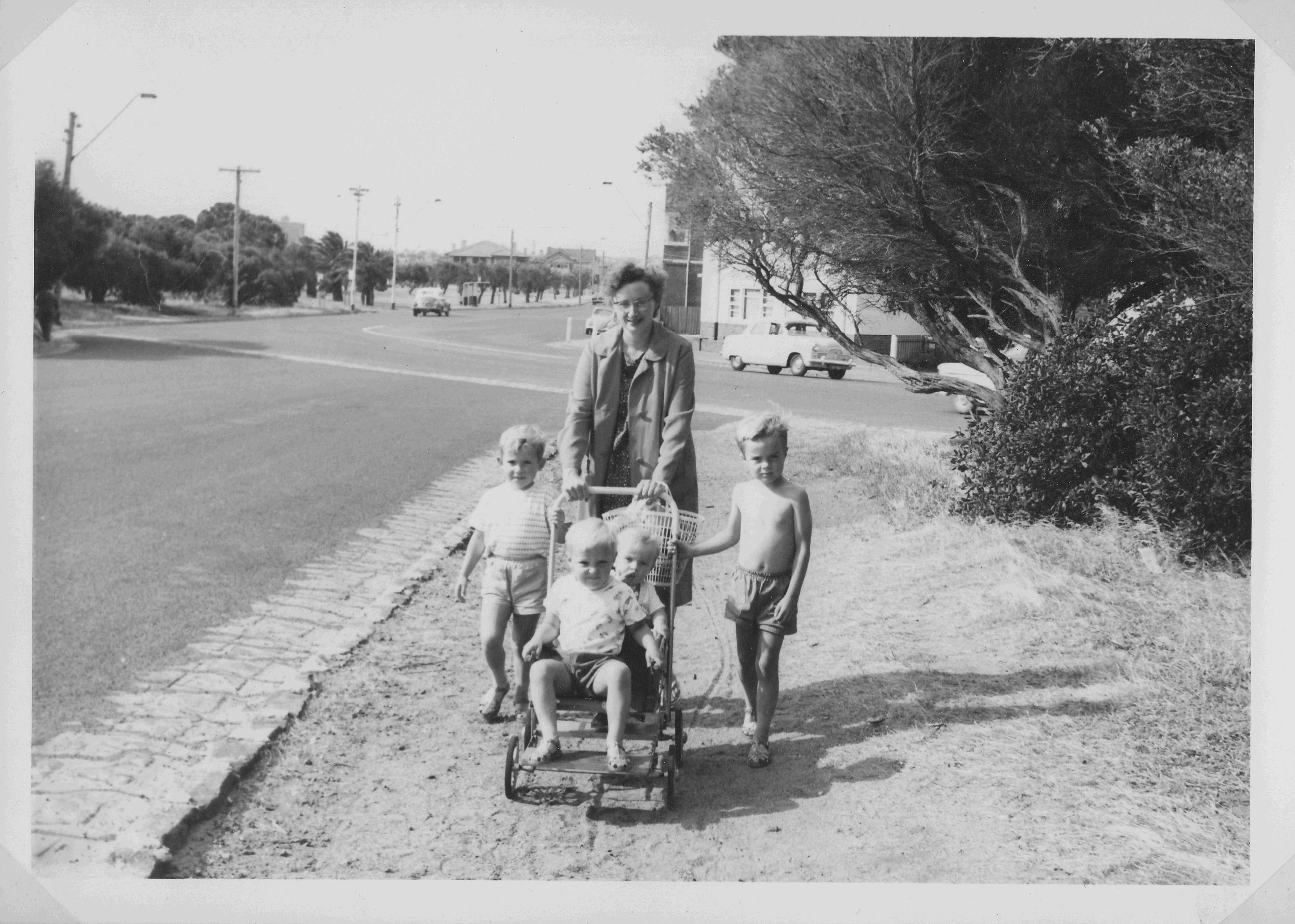 Ruth and the children in St Kilda in Oct 1961. Jeff joins the family in Australia 1 month later
Ruth and the children in St Kilda in Oct 1961. Jeff joins the family in Australia 1 month later
Moving a young family to a new country is always a deeply personal story. As a wife & mother of 4 young children – & with her 5th child already well on the way, Ruth Whittle makes the move to Australia. Arriving in Melbourne in 1961, Ruth’s story will resonate with anyone who has had to start their life afresh in new, welcoming and yet sometimes strangely unfamiliar land.
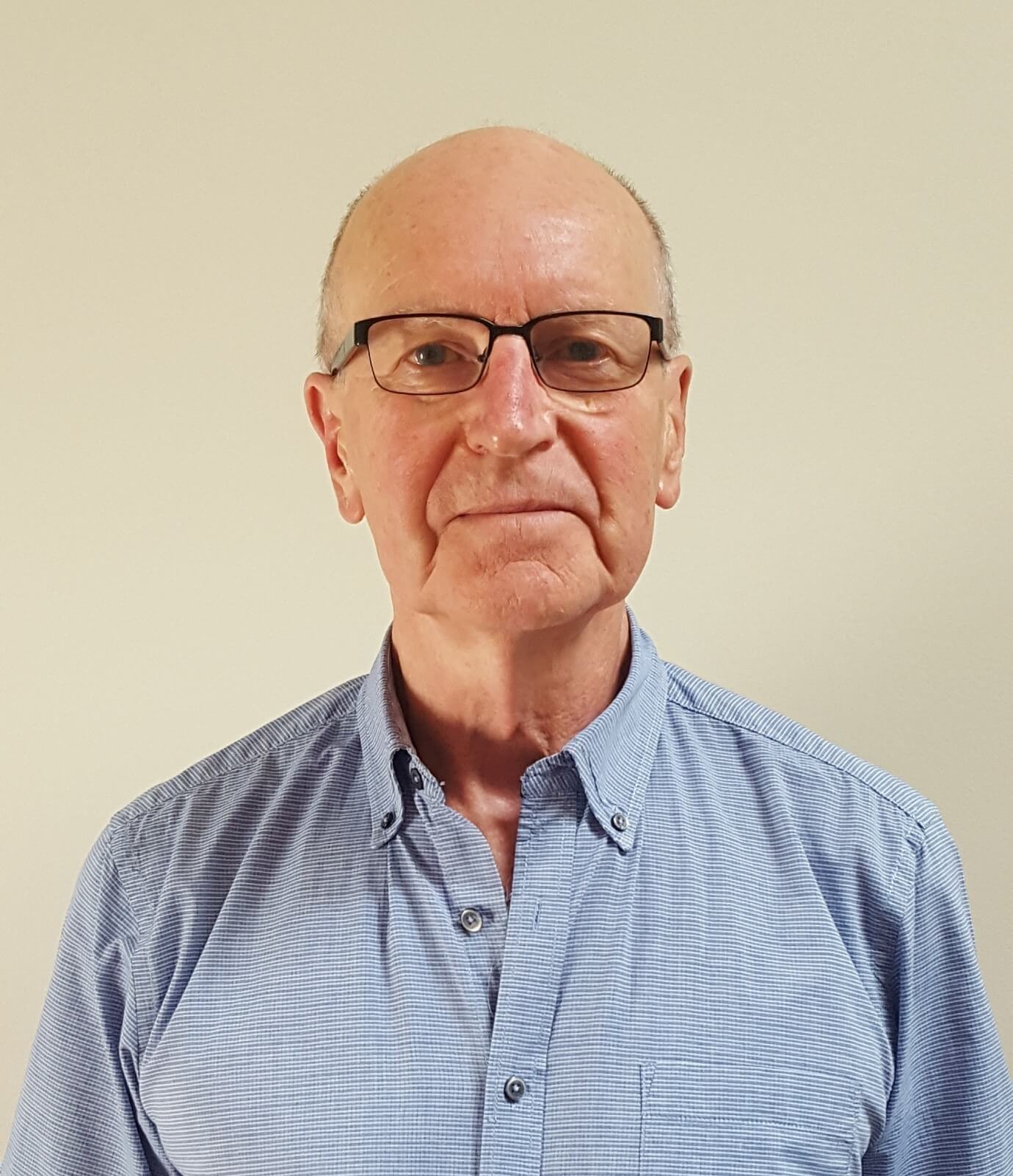
Being a pioneer is never easy. Challenging accepted norms & long-held modes of operation are all part of the role. In this story, John Robinson tells how he worked alongside Jeff Whittle at Newmont Mining in the mid-1980’s. As such, he was one of the first to see Jeff’s newly developed pit optimisation software in action. To say that he was surprised with the results is probably an understatement.
Section 3
Jeff Whittle’s Order of Australia (AO)
- 3.1 Jeff Whittle & Whittle by Chris Davis
- 3.2 Supporting Jeff’s AO Nomination by Dr Peter Lilly
- 3.3 Official Announcement – Jeff Whittle awarded Order of Australia (AO)
- 3.4 Mining Industry Icon Honored for Service
- 3.5 Jeff Whittle Speech at AO Dinner – Meccano to Mining
- 3.6 Ruth Whittle Speech at AO Dinner – An Incredible Journey
- 3.7 David Whittle Speech at AO Dinner – The Development of Whittle Programming
- 3.8 Gerald Whittle Speech at AO Dinner – The Development of Whittle Consulting
- 3.9 Jeff Whittle – A Career Outline

The move to recognise Jeff Whittle for his involvement in the mining industry is a story in itself. In this article, Chris Davis (a Fellow of the Australian Institute of Mining & Metallurgy) explains his growing realisation of the contribution of Jeff Whittle & his subsequent quest to submit a successful nomination for him in the 2018 Australian Day Honours List.
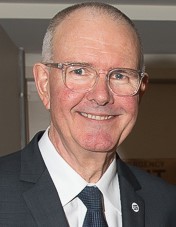
The process for nominating a person for inclusion in the Australian Honours List is a significant undertaking. It includes a formal written application, prepared under the name of a nominator which is supported by a range of referees. Dr Peter Lilly was one of the referees for Jeff Whittle’s nomination. Here he describes why he was happy to provide a letter of support for Jeff’s nomination.
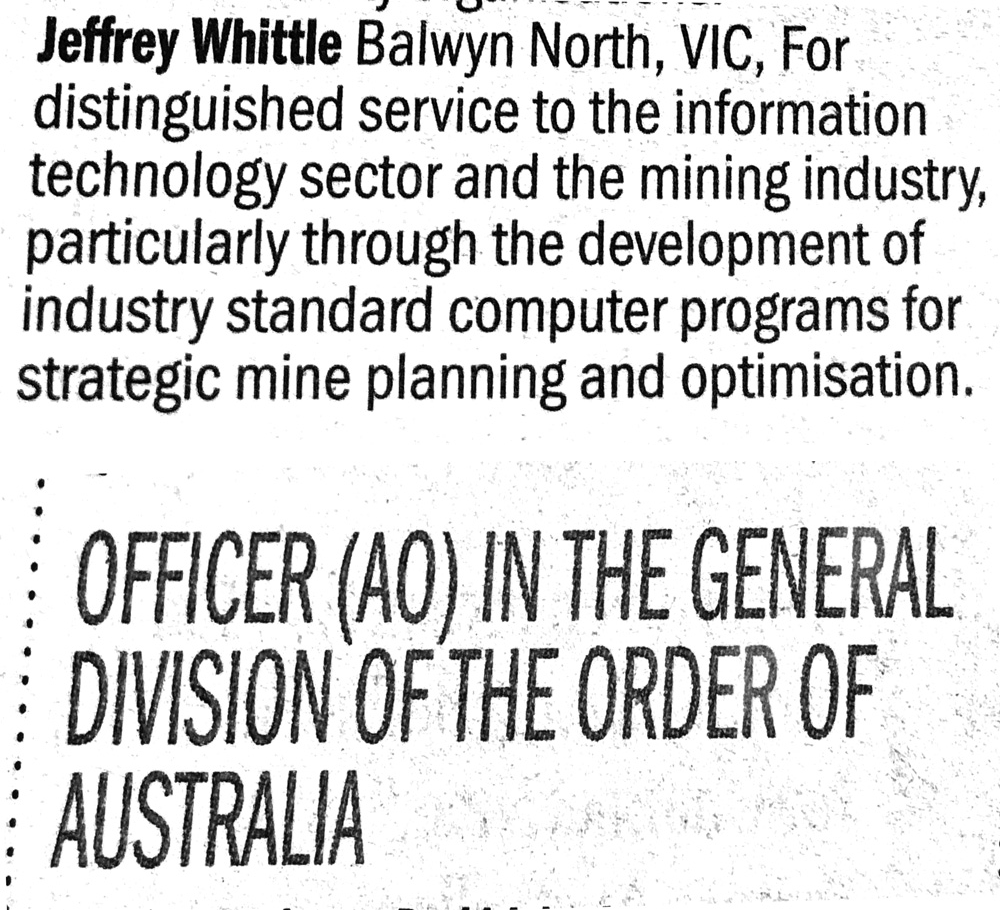 The Age, Friday January 26th, 2018
The Age, Friday January 26th, 2018
Jeff Whittle was recognised in the Australia Day Honours for 2018. He was named an Officer in the General Division of the Order of Australia (AO).

It’s important to celebrate significant events. That’s why Whittle Consulting held a private dinner in April 2018 to celebrate Jeff Whittle’s investiture as an Officer in the General Division of the Order of Australia (AO). A press release was circulated afterwards to announce the news to mainstream & industry publications.
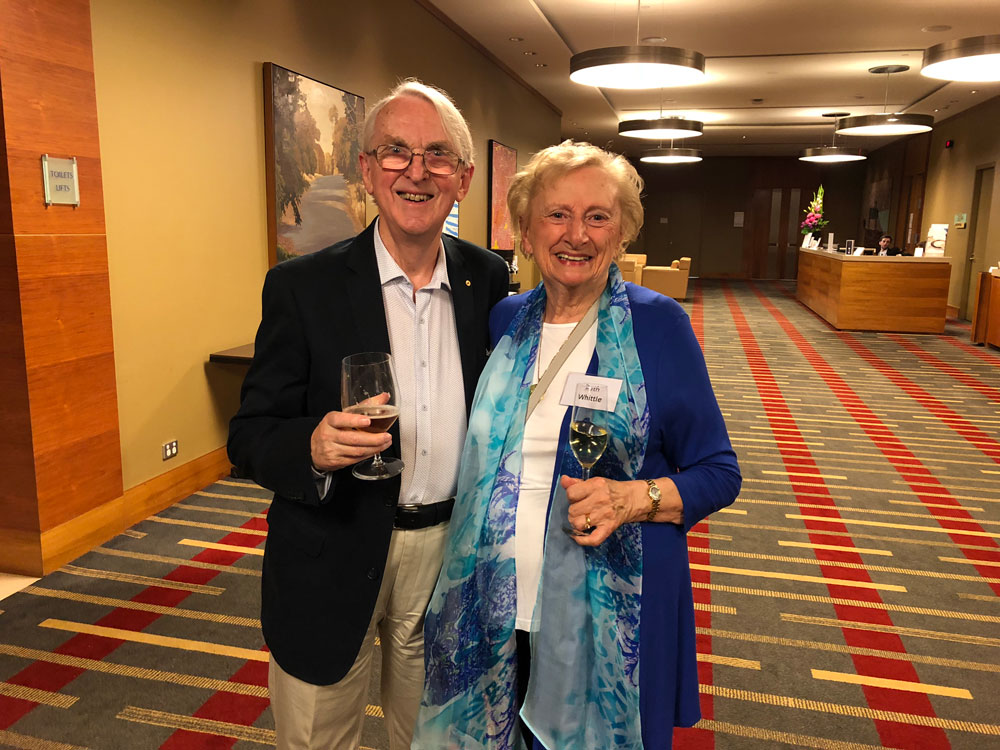 Jeff & Ruth Whittle at the RACV Club Dinner, Melbourne May 2018
Jeff & Ruth Whittle at the RACV Club Dinner, Melbourne May 2018
This is the talk given by Jeff Whittle at a private dinner organised to celebrate his appointment as an Officer of The Order of Australia (AO) for services to the mining industry. The function was held at the RACV Club in Melbourne on Friday April 20, 2018. Many of the people who had contributed to Whittle Programming & Whittle Consulting over the years were present. It was a wonderful celebration of achievement & friendship.
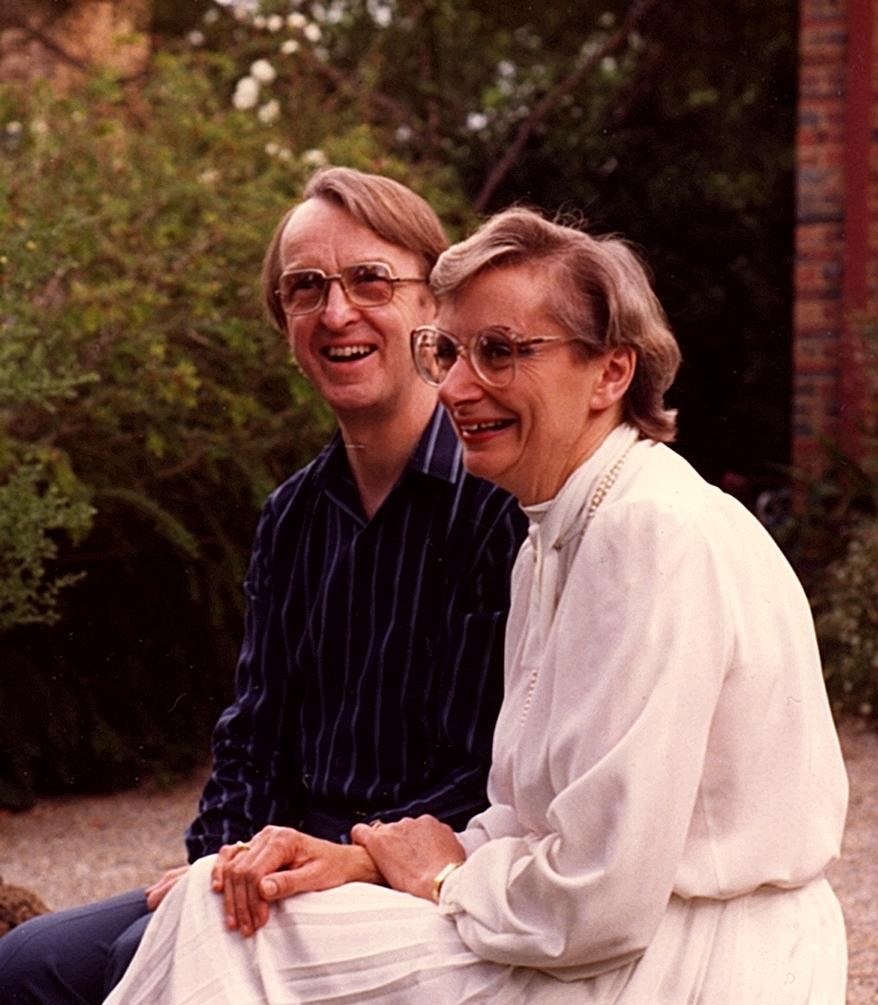 Jeff & Ruth Whittle embark on a new adventure and establish Whittle Programming in 1984
Jeff & Ruth Whittle embark on a new adventure and establish Whittle Programming in 1984
In April 2018, a formal dinner was held in honour of Jeff Whittle’s investiture as an Officer of the Order of Australia (AO). This event also celebrated a lifetime of achievement for both Jeff & Ruth Whittle. At the dinner, Ruth gave a speech on the creation of the business & the important role that she has played in its’ development. This story is truly an incredible journey.

David Whittle is the fourth son of Jeff & Ruth Whittle. He worked in the family business as Business Manager, Managing Director & later as a Director of the newly formed Whittle Technology Ltd (2000). After the sale of the Whittle software to Gemcom Software International (2001), David moved to Canada, spending five years as the Whittle Product Manager & Vice President Marketing. This background has given David a vast body of knowledge to draw upon for his speech at the formal dinner celebrating Jeff’s investiture as an Officer of the Order of Australia (AO). This is what he said.

Gerald Whittle is the second son of Jeff & Ruth Whittle. In his speech at the dinner celebrating Jeff Whittle’s AO award, Gerald told the story of the second chapter in the Whittle Story – the beginning of Whittle Consulting in 1998. This is a story of how the family business goes global whilst still retaining the honesty, integrity & the hunger for ongoing software development for which Jeff Whittle is renown.

Jeff Whittle is a physicist-turned-computerist with 44 years of extremely varied & successful experience in computing. He has worked on projects which were technical, mathematical, educational & psychological. He has worked on Operations Research & on compilers. He has headed successful project teams & he has worked on his own. He is comfortable with most computer languages, both procedural & non-procedural, & he takes a pride in producing high quality programs quickly, either by himself or working in a team. Jeff’s 65-year long career is a story of unflagging intellectual curiosity & unstinting professional endeavour which has helped to shape the international mining industry.
Whittle Programming Milestones
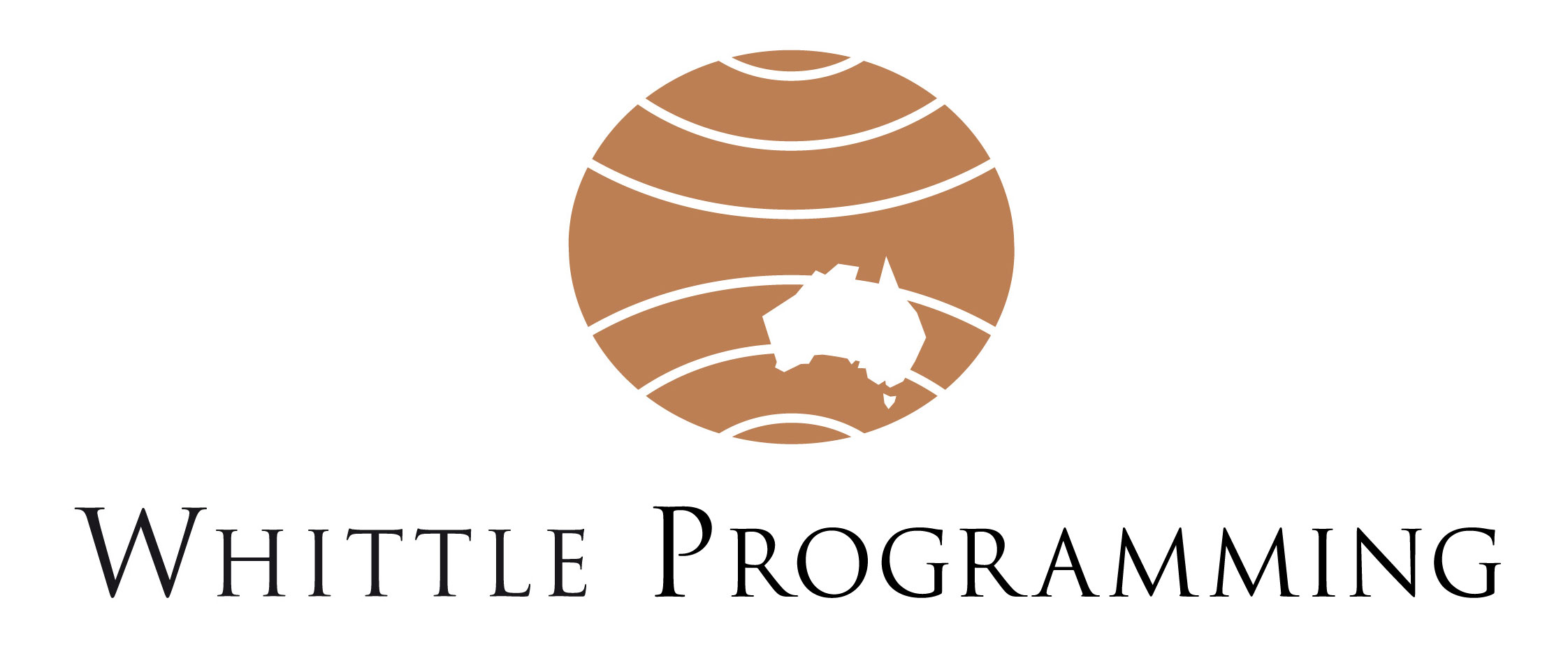
- 1977
After leaving Monash University, Jeff Whittle begins consulting to various clients as “Whittle Programming.” - 1979
Jeff Whittle begins consulting to Newmont Mining in Melbourne, commencing his exposure to the Australian mining industry. - 1984-1985
Development of Three-D software by Jeff Whittle. - 1984-1985
Establishment of Whittle Programming Pty Ltd from the family home in Balwyn, Victoria, Australia. - 1986
First overseas commercial sale of Three-D software to APIRSA in Spain for US$5000. - 1986
First educational sale of Three-D software to Laval University, Canada for US$100 - 1987
Release of Four-D. - 1987
Four-D wins Australian Information Technology Award (AITA) “Software Product of the Year.” - 1989
Whittle Programming awarded Australian Small Business Award. - 1990
Jeff Whittle awarded membership of SSME (USA). - 1991
Four-D gains an Australian Design Award. - 1992
Four-D chosen for inclusion in the permanent exhibition of the Powerhouse Museum in Sydney, Australia. - 1993
Four-D awarded at XXIV APCOM Symposium in Montreal, Canada.
- 1993
Jeff Whittle and Whittle Programming awarded memberships to AIIA, Canadian IMMM&P, Austmine. - 1994
Jeff Whittle elected Fellow of the Australasian Institute of Mining & Metallurgy (AusIMM). - 1994
Jeff Whittle awarded membership to Austmine. - 1995
Release of Opti-Cut. - 1995
Letter (and cheque) received from Ken Lane re Opti-Cut. - 1995
Jeff Whittle recognized by “Computerworld Australia” and Data General Australia as a Computerworld Fellow for contributions to computing in Australia. - 1995
Jeff Whittle & Whittle Programming named Australian Information Technology “Achiever of the Year.” - 1995-1996
The Federal Government’s MARKET AUSTRALIA thrust into Eastern Asia uses Whittle Programming as an example of Australian innovation. - 1996
US Copyright Office – Certificate of Registration (Opti-Cut 0.92). - 1997
US Copyright Office – Certificate of Registration (Opti-Cut 0.95). - 1997
Total sales reach $5,000,000, across 55 countries.
 WEG cartoons of Jeff & Ruth Whittle completed by WEG in the Whittle Programming office in 1989
WEG cartoons of Jeff & Ruth Whittle completed by WEG in the Whittle Programming office in 1989
It’s not often that a name becomes a verb. Although it’s hard to pinpoint exactly when it happened, the name “Whittle” has now evolved into a full-blown mining term. To this day, it is hard for a mining operation to gain financial backing unless it has been “Whittled.” In many ways, this is the ultimate compliment to what Jeff Whittle & his team have achieved.
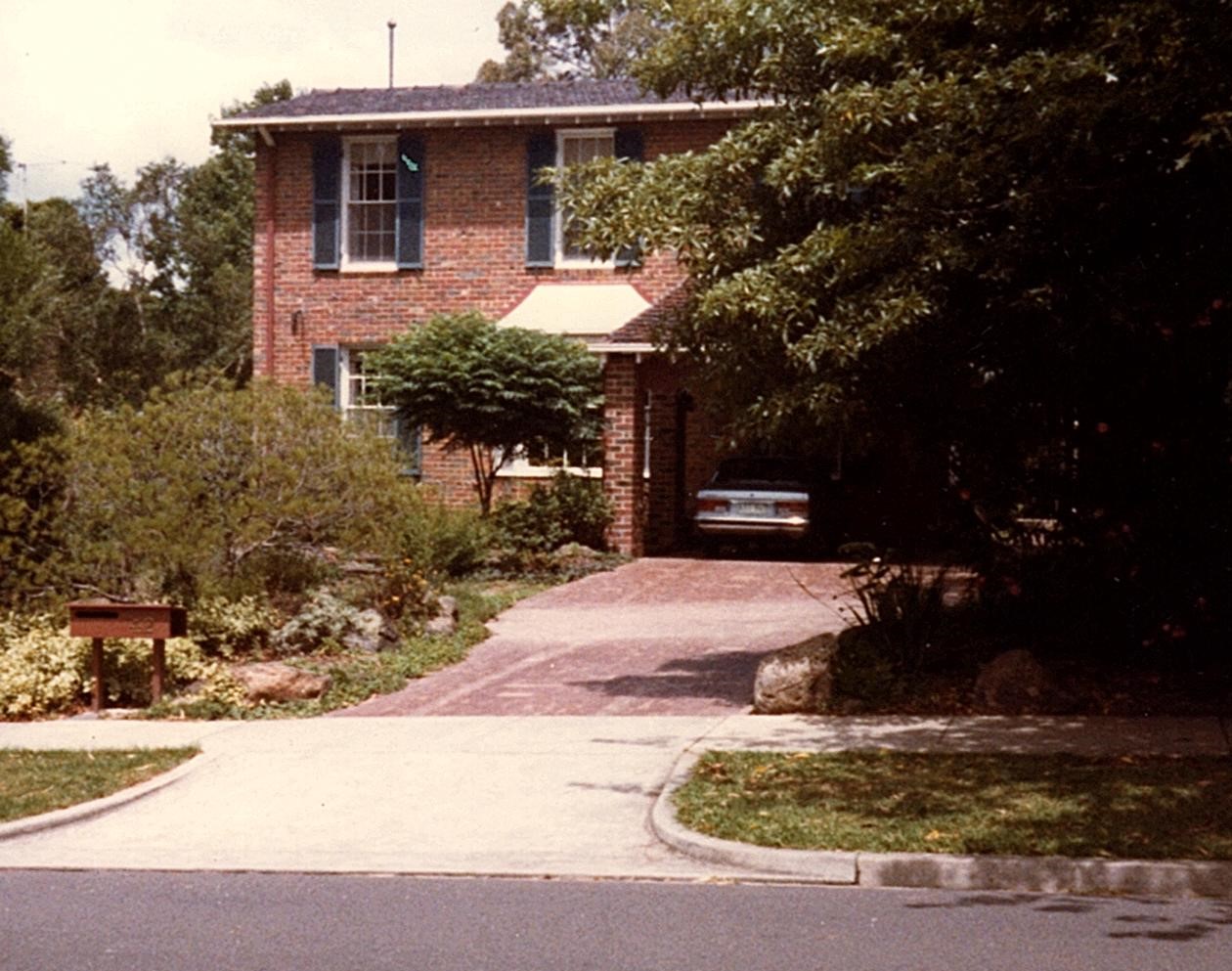 The Whittle Family Home in Balwyn, Victoria, Australia was the first office of Whittle Programming circa 1987
The Whittle Family Home in Balwyn, Victoria, Australia was the first office of Whittle Programming circa 1987
Born Global definition: a type of company that from the beginning of its activities pursues a vision of becoming global & globalises rapidly, without any preceding long term domestic or internationalisation period.
In this instalment of the Whittle Story, Ruth Whittle explains the culture of endeavour that underpinned the development of Whittle Programming as one of the first “Born Global” companies in Australia.
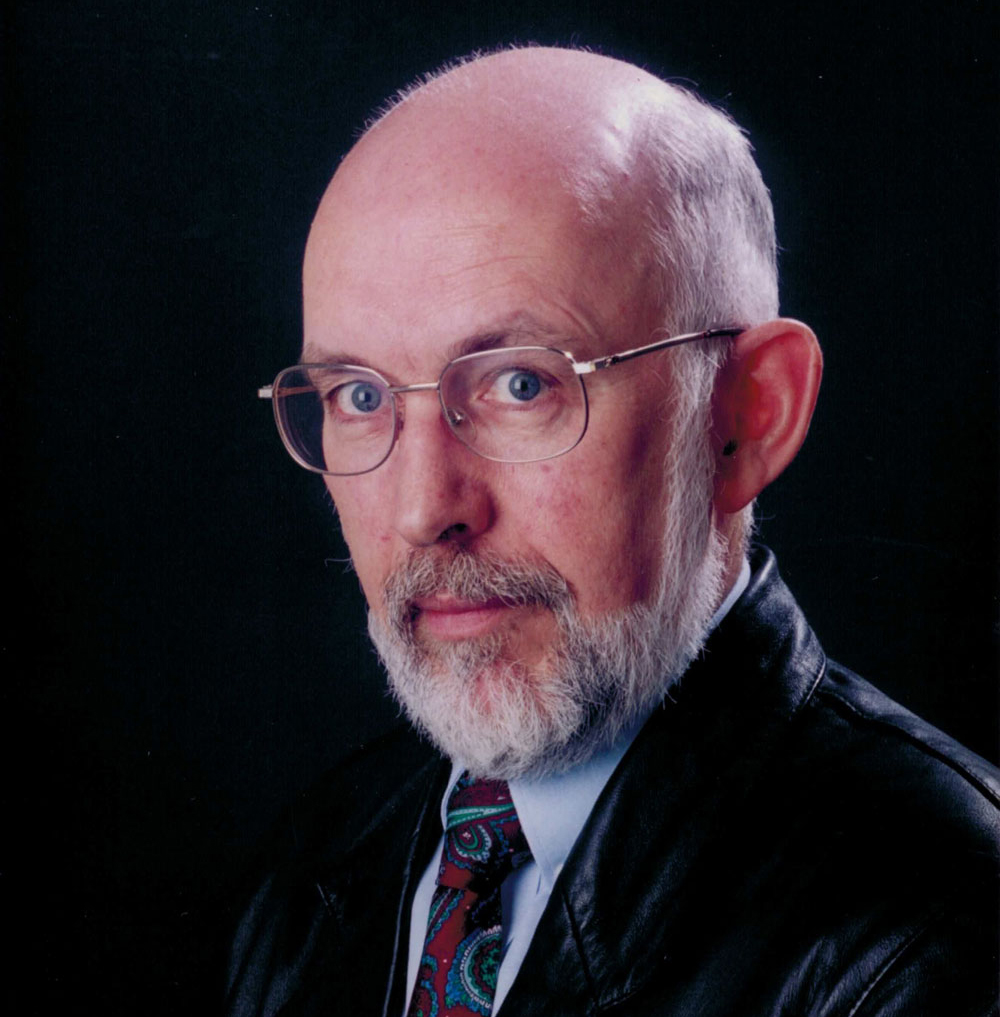
Geoff Hall was instrumental in the development of Whittle Programming & the WP software. Over his time, he saw the business evolve from working out of former bedrooms in Ruth & Jeff’s Balwyn home to rented office space in Balwyn & Box Hill. Later, Geoff spent 2 years living & working in Vancouver, Canada – assisting when WP software was sold to Gemcom (now Geovia). This is his story.

Chris Wharton joined Whittle Programming in early 1993, providing valuable technical support to the growing company. Chris observed first-hand the development of Whittle Four-D, Four-X, Opti-cut and the Whittle graphical interface (GUI).
In this story, Chris records the background to the development of early Whittle software. Chris records the corporate culture of attention to detail, meticulous, elegant and rigorous programming, testing and re-development. These traits built the reputation that the Whittle name enjoys, and still retains, to this day.

What is a Block Model?
All Whittle software works, in various ways, on the basis of a “Block Model.” But what is a Block Model?
Open pit mining is conducted by working across a level called a “bench.” This allows trucks, diggers and other equipment to move about freely. When a bench is completed, a small vertical cut is made down to the level of the next bench. This is then mined horizontally out from the small vertical cut, creating the next bench level.
Each bench is divided into rectangles called blocks. The resource in each block is then estimated from drill hole information. The quality of individual blocks varies dramatically. They can be composed entirely of waste, entirely of ore or a combination of ore and waste. A determination is then made on the likely cost to mine and the revenue to be gained from mining, and possibly, processing the ore in each block. The file which contains the information of all the blocks in the mine is called a block model.
What are phases?
Within a final pit outline it is usual to begin by mining a smaller mine outline. This allows quicker access to the ore and the resultant revenue stream. As time goes on, this is then followed by a series of bigger mined outlines. These outlines are called mining phases.

Whittle Programming released Whittle Three-D in 1985. Using the famed Lerchs-Grossmann algorithm, it revolutionised the optimisation of surface mines around the world. Whittle Three-D determined for the first time, with mathematical precision, the optimal, three-dimensional shape for an open pit mine. Importantly, it maximised the total undiscounted cashflow, illustrating the point at which it was more economic to proceed to an underground mine. Whittle Three-D was used for mines with a life of up to three years.
Click here to view an archival copy of the Whittle Programming Three-D brochure

In 1987, Whittle Four-D was released, incorporating time (the fourth dimension), risk and optimisation around Net Present Value (NPV). Whittle Four-D produced a nested set of 40-100 optimal pits based on potential economic scenarios and mining sequences. The user can quickly investigate an enormous variety of cut-off, scheduling, scaling and timing options within a financial analysis framework. Whittle Four-D aided in the design of pushbacks, wall slopes and the surface versus underground mining decision. It is used when the mine life is expected to be more than three years.
In 1987, Whittle Four-D won the Australian Technology Association Software Product of the Year Award. In 1992, Four-D won the Australian Design Award and was accepted into the Permanent Collection of the Powerhouse Museum in Sydney, Australia.
Click here to view an archival copy of the Whittle Programming Four-D brochure

Opti-Cut was released in 1995, using Ken Lane’s concepts relating to cut-off grade. Opti-Cut was integral in allowing mining companies to be able to optimise cut-off grades over the life of the mine, maximising NPV by up to 10%. Applicable to both surface and underground projects, Opti-Cut also produces life of mine, cut-off, stockpile strategy, tonnages and cash flow plans.
Click here to view an archival copy of the Whittle Programming Opti-Cut brochure

In 1997, Whittle Four-X was released, it had the added ability to handle multiple elements within the same orebody. Four- X has all the facilities of Four-D but extends these concepts. Four-X operates in a similar way, however unlike Four-D, it is not limited to handling just one product. Four-X will handle up to ten “elements,” where each may or may not be a product and may or may not be the subject of a cut-off. When using Whittle Four- X, costs and recoveries can vary with the grade of any of the elements.
Click here to view an archival copy of the Whittle Programming Four-X brochure

Named after Jeff Whittle’s favourite red wine making region of Australia, the Milawa algorithm was released and incorporated into Four- D in 1998. Milawa allowed the manipulation of the mining sequence to maximise the NPV over the life of the mine.
Click here to view an archival copy of the Whittle Programming Milawa brochure
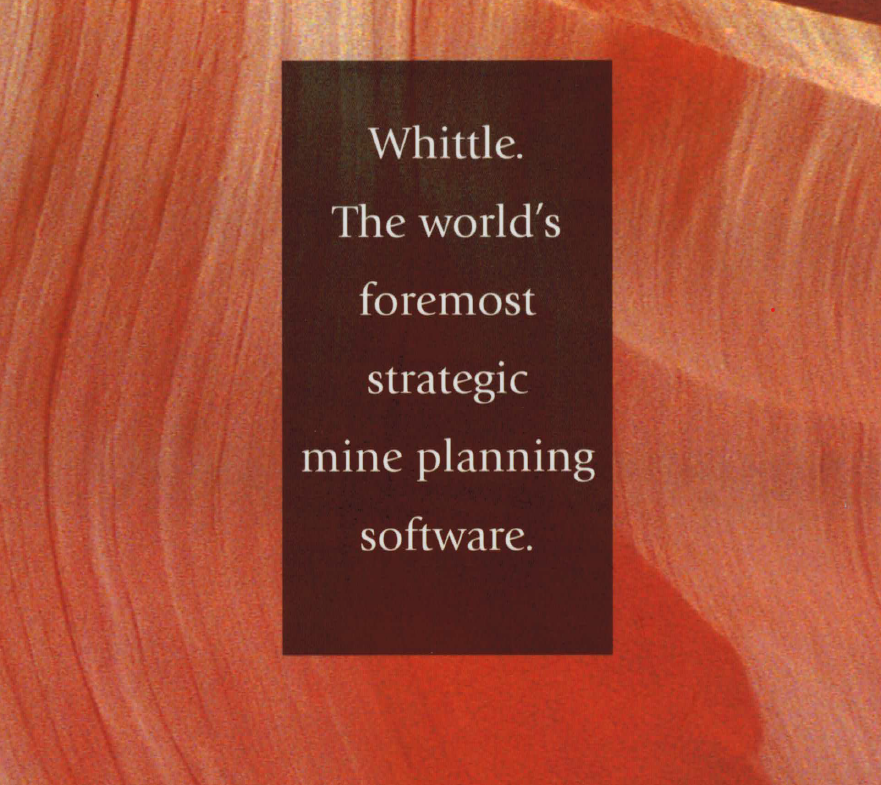
Whittle Programming produced a range of marketing collateral. In this section we have archived copies of these documents for historical purposes.
Click here to view an archival copy of the 1999 Whittle Programming Brochure
Section 6
Whittle Consulting – the story continues
- 6.1 Whittle Consulting Milestones
- 6.2 A family business develops into something more by Gerald Whittle
- 6.3 The Whittle Consulting Seminar Story by Stephanie Jones
- 6.4 Adapting to COVID – Whittle Consulting pivot to online technology
- 6.5 Whittle Consulting in collaboration with SMG Consultants pivots to drone technology
Whittle Consulting Milestones
- 1999
Whittle Consulting established in Box Hill, Melbourne, Australia - 2004
Lewis Tota joins Whittle Consulting, establishing the Technical Services Team - 2006
Awarded AusIMM Minerals Industry Operating Technique Award (MIOTA). - 2006
Jeff Whittle elected Fellow of the Australian Computer Society – Life Membership. - 2007
Jeff Whittle named winner of Most Outstanding contribution to Mining from Australian Mining Prospect Awards - 2009
The Whittle Consulting team expands to include additional Technical Services & Marketing personnel - 2009
Development & launch of first INTEGRATED STRATEGIC PLANNING seminar, South Africa - 2011
Expansion sees Whittle Consulting move to larger premises in Surrey Hills, Melbourne, Australia
- 2013
Jeff Whittle inducted to International Mining Technology Hall of Fame – Mining Software. - 2015
Prober – E launched - 2016
Whittle Consulting run their 100th INTEGRATED STRATEGIC PLANNING seminar, Turkey - 2017
Launch of Whittle Consulting Marketing rebrand - 2018
Jeff Whittle awarded Order of Australia (AO) - 2019
Whittle Consulting run their 150th INTEGRATED STRATEGIC PLANNING seminar, Sweden - 2019
Whittle Consulting celebrate 20 years of operation
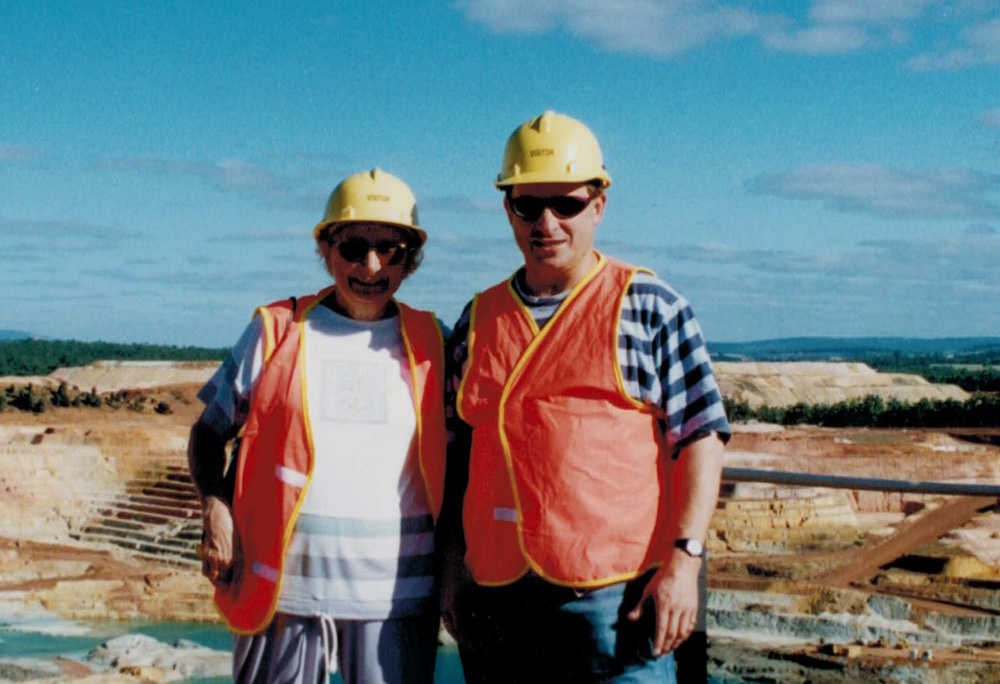 Ruth led a field trip for delegates at the third biennial conference, “Strategic Mine Planning” (March 1999) to the Boddington Mine, WA. This was the first time Gerald had been to a mine site.
Ruth led a field trip for delegates at the third biennial conference, “Strategic Mine Planning” (March 1999) to the Boddington Mine, WA. This was the first time Gerald had been to a mine site.
The creation and development of a family business is by its’ very nature a deeply personal story. With the benefit of the hindsight of 2 decades, Gerald Whittle tells the story of the background, establishment and development of Whittle Consulting. His corporate story is one of courage, optimism, resilience and intellectual endeavour. It also runs in parallel with the dawn of a new era, as the international mining industry begins to appreciate the significant economic advantages for mining projects and operations who utilise Whittle Consulting services and software.

The Whittle Integrated Strategic Planning seminar (formerly called the Money Mining Seminar) has been integral to the success of Whittle Consulting. Since 2009, it has been the primary method by which the company has “spread the word” about the incredible financial impact that Whittle Integrated Strategic Planning can have on mining projects and operations. For the past decade, Gerald Whittle has travelled around the world and has run the seminar over 150 times to approximately 3,000 participants. Always interesting and often challenging, our seminar is frequently a “lightbulb moment” for participants – changing forever the way they view and operate their mining businesses. In this story, Stephanie Jones, our Marketing Manager tells her story about organising and developing our seminar.

Adapting to COVID in 2020 has been one of the most significant business challenges ever faced by Whittle Consulting. In this story, we precis the responses that we made in our submission for the 2020 Australian Export and Investment Awards. These awards are held to celebrate the remarkable stories of resilience, ingenuity and courage of Australian businesses as they adapted to COVID.

Changed circumstances create new opportunities. Due to COVID, Whittle Consulting has trialled drone technology with significant success. In this article, we discuss this exciting new development.

Z3 was the combination of a mathematical search algorithm that worked in conjunction with a linear programming evaluation routine. The search algorithm sampled feasible, alternative life-of-mine mining plans. This evaluation determined the optimal cut-off grade, stockpiling, processing selection, blending and production plan that the specified mining plan could support – as well as determining the NPV. Based on the NPV feedback, the search algorithm applied complex decision rules to focus on combinations of mining variables. Good results were further applied and poor combinations, showing poor results, were discarded. Z3 was used to routinely optimise models with several thousand mining variables and many more processing variables.

Finding an optimal, or near optimal, long-term schedule for a very large mining complex can be computationally difficult. This is not only because of the size of the problem – but because of its complexity. Prober B is a multi-pit blending scheduler software. It was designed for complex, simultaneous, optimisation modelling of cut-off and stockpiling. Developed to cope with large problems, Prober-B works by repeatedly creating a random initial feasible schedule. It then iteratively uses linear programming to globally optimise the mine in question.

The development of Prober-64 bit was a step-change in the capacity of Whittle software. With its’ added capability from 32 to 64-bit CPU processing, Prober-64 bit unleashed the power of almost unlimited computational capacity. Removing the 2 gigabytes of memory limitation, Prober was significantly enhanced allowing for large and complex problems to be presented to the software. This meant that for the first time the power of dimensions could be applied within the Prober-64-bit software. Capital Capacity Optimisation was added to Prober, enabling Prober to buy/expand extra capacity on a limit, if, and when, it is required.

The combination of Enterprise Optimisation and Prober-C was a game changer for many of our clients. Prober-C enables intricate modelling of multiple steps in the mining value chain, bringing technologies such as mine-to-mill, selective blasting, ore sorting, and complex comminution strategies into the strategic planning process. In its’ previous iteration, Prober-B only had 3 steps (i.e. mining, processing and products). Prober-C unlocked the power of applying an unlimited number of Mining/Processing/Blending steps to the equation. This meant that modeling could more precisely mirror the mining operation under consideration.

Whittle combined the Evolutionary Solver (Genetic Algorithm) with Prober-C for highly iterative operations like underground cut-off selection and phase selection in pits. Prober-C, a Whittle proprietary algorithm, optimises mining enterprise systems. However, Prober-C cannot directly optimise systems where there are sets of discrete Either/Or choices to be made, (e.g. to mine either a high-grade version, medium-grade version or low-grade version of the same pit or underground stope.)
When there are many such choices to be made a genetic algorithm is used to find the best combination of choices. In broad terms, genetic algorithms are inspired by Darwin’s theory of natural selection. In this case the genetic algorithm selects the “best” or “fittest” for NPV. The lowest NPV selections are abandoned and the best NPV selections are recombined. Some random mutations are introduced to ensure genetic “diversity.” The process is repeated to create outcomes for higher and higher NPV. This computational ability was then “wrapped around” Prober-C to create an added level of functionality.

The development of Prober-E in 2015, was undertaken to “future-proof” the Whittle proprietary software. By moving from a Fortran-based program to the newer technology of C++ allowed the elegance, beauty and strength of Prober to be re-written in contemporary computer language. This has opened up the Prober software to be a part of the development of future IT trends, ensuring that the software will maintain its cutting-edge capacity both now and into the future.

The development of Cloud Processing has been a watershed for all forms of IT technology. Whittle Consulting has also harnessed the incredible capacity of Cloud processing and access by developing a system that can run Prober from the cloud. This evolution in processing, has ensured that proprietary Whittle software can be scaled up to harness the almost unlimited power of the additional computational capacity of the cloud, as and when required.
Section 8
The theories & concepts that underpin us
- 8.1 The algorithm that sparked a new industry
- 8.2 Jeff Whittle learns about the Lerchs-Grossmann algorithm
- 8.3 The theories that define our software
- 8.4 What is Activity-Based Costing?
- 8.5 What is Theory of Constraints?
- 8.6 Ken Lane – a mine optimisation pioneer
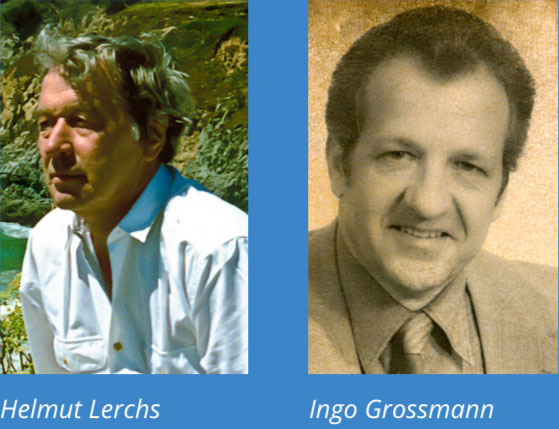
The Lerchs-Grossmann algorithm emerged in 1964 as the key to finding the optimum design for an open pit mine. Based on Graph Theory, it was designed by two mathematicians, Helmut Lerchs & Ingo Grossmann, who were working together at IBM in Canada. In their words at the time, “the objective is to design the contour of a pit so as to maximise the difference between total mine value of the ore extracted & the total extraction cost of ore & waste.”
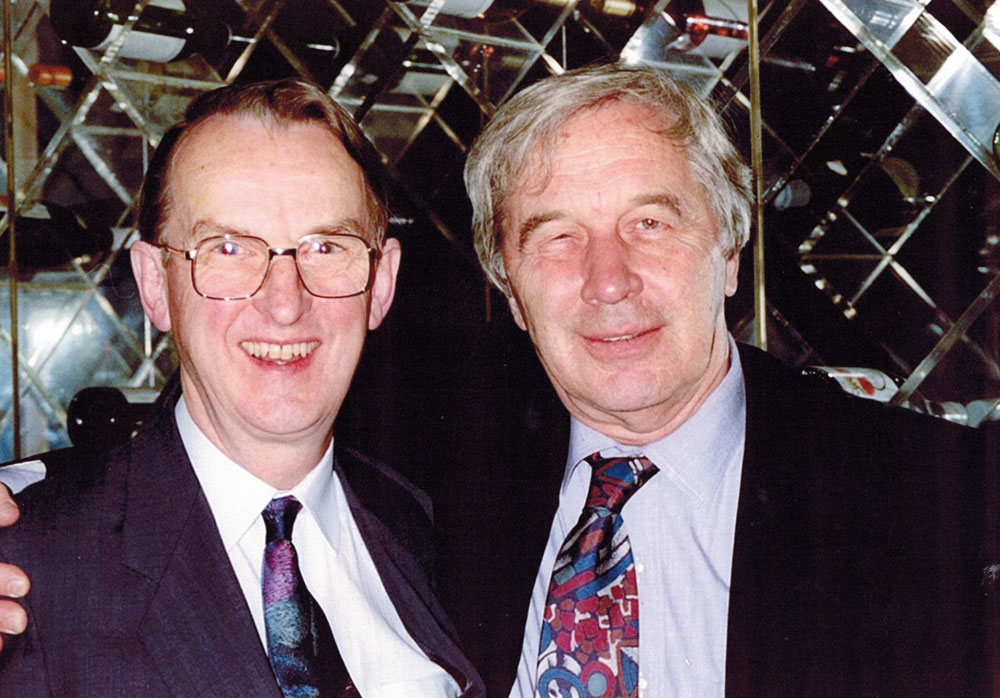 Jeff Whittle & Helmut Lerchs in Montreal 1993
Jeff Whittle & Helmut Lerchs in Montreal 1993
Jeff Whittle came across the Lerchs-Grossmann papers in 1984, while working for Newmont Australia. Jeff knew of the need to use the renowned algorithm and recognised the important application that this could have within the mining industry.
In many ways, his discovery of the Lerchs-Grossmann algorithm crystallised Jeff’s lifetime of work experience. With a decade of experience at Melbourne’s Monash University in the computer centre in the 1970’s, and a further 10 years refining his skills within the mining industry, Jeff had the right experience and the right skill set – all at the right time. Aged in his 50’s and inspired by the challenge, Jeff know that he could apply the Lerchs-Grossmann algorithm with emerging computer modelling to write a practical and elegant mining optimisation programme. Of course, the rest is history…
Jeff Whittle met Helmut Lerchs once in Montreal in 1993. Unfortunately, he didn’t get to meet Ingo Grossmann before he passed away in 1995. Helmut Lerchs died in Canada in 2017.

In the past, many mining operators had utilised a range of costing methodologies & planning mechanisms within their mine planning. Under the Whittle approach, two new concepts were fully applied to the mining industry for the first time. These concepts included Activity-Based Costing (ABC) & the Theory of Constraints (TOC). The application of these techniques revolutionised mine planning, creating a powerful analytical approach for decision-making across all aspects of a mining operation.
Definition: Cost modelling based on activities performed & their relevant cost drivers, plus a distinction between period/fixed & attributable/variable costs.
Activity-based Costing (ABC) more accurately reflects the cause-and-effect relationship between activity costs and the cost drivers to which they are attributable within an operation. Whittle Consulting applies ABC by:
- Identifying the key “activities” that incur costs
- Identifying the appropriate “cost driver” for each activity.
- Creating a complete model which recognises “front line”, “support” and “back line” activities in a logical manner.
- Calculating the “fully loaded” cost of front line activities, which can then be accurately applied to operational “cost objects.”
- Ultimately identifying the “Fixed Cost” or “Period Cost” of each activity at full capacity.
- Comparing these costs to a lower level of activity within the “Relevant Range” of operation.
Definition: A concept that views any manageable system has being limited in achieving its goals by a very small number of constraints.
Theory of Constraints (TOC) recognises that processes and organisations are vulnerable to their weakest link. This can adversely affect the performance of the entire operation. Whittle Consulting strategically applies TOC to:
- Identify the primary and secondary bottlenecks to cash flow (the goal) within the system.
- Identify what the true nature of the characteristics of the bottlenecks.
- Optimise the performance of the bottlenecks by aligning the operating policy of the entire system to the characteristics of the bottlenecks.
- Subordinate everything else – increasing activity in non-bottleneck areas is a waste of time or is even destructive.
- Elevate the bottleneck until it is no longer a bottleneck.
- Once successful – start all over again with the new bottleneck!
- Continue until the ultimate bottleneck is where it should be in a design sense. This will be the most capital-intensive part of the system or the market itself.
We recommend reading “The Goal – A Process of Ongoing Improvement,” by Eliyahu M. Goldratt. ISBN: 978-0-88427-178-9.
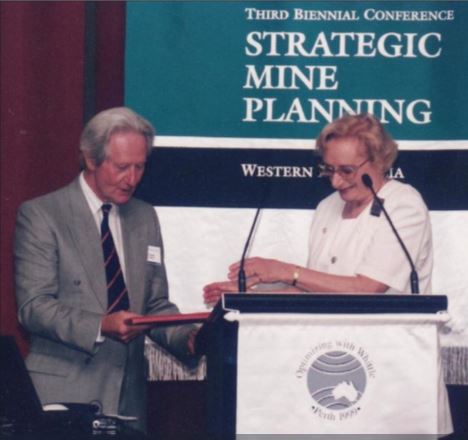 Ken Lane & Ruth Whittle, 1999
Ken Lane & Ruth Whittle, 1999
Ken Lane was one of the pioneers & a leading proponent of mining optimisation. He is the author of one of the seminal books & a standard reference work within the mining industry, “The Economic Definition of Ore.” Elaborating on the theory originally developed in 1964, this book provides a thorough & comprehensive description of the theory & practice of implementing cut-off grades within a mining operation. The book explains how & why cut-off grade optimisation can often lead to substantial improvements in the value of mining projects. Still in print after over 50 years, this work has been the bedrock of mining practice & is one of the few reference books on mine optimisation. It has also been foundational to the development of Whittle Consulting software. Jeff Whittle has met Ken Lane on several occasions over the years.
We recommend reading “The Economic Definition of Ore. Cut-Off Grades in Theory & Practice” by Kenneth F. Lane. ISBN-13: 978-0994185235

Whittle Integrated Strategic Planning is a concept of long-term planning which considers:
- All parts of the value chain – from the mineral resource to the market.
- All periods – a decision of what to mine & process in one period affects the options for the other periods.
- All stakeholders – shareholders are interested in financial returns in the form of cash flow & capital growth. However, the interests of employees, local communities, the government & the environment must all be considered to earn an enduring licence to operate.
Click here to watch a video explaining Whittle Integrated Strategic Planning
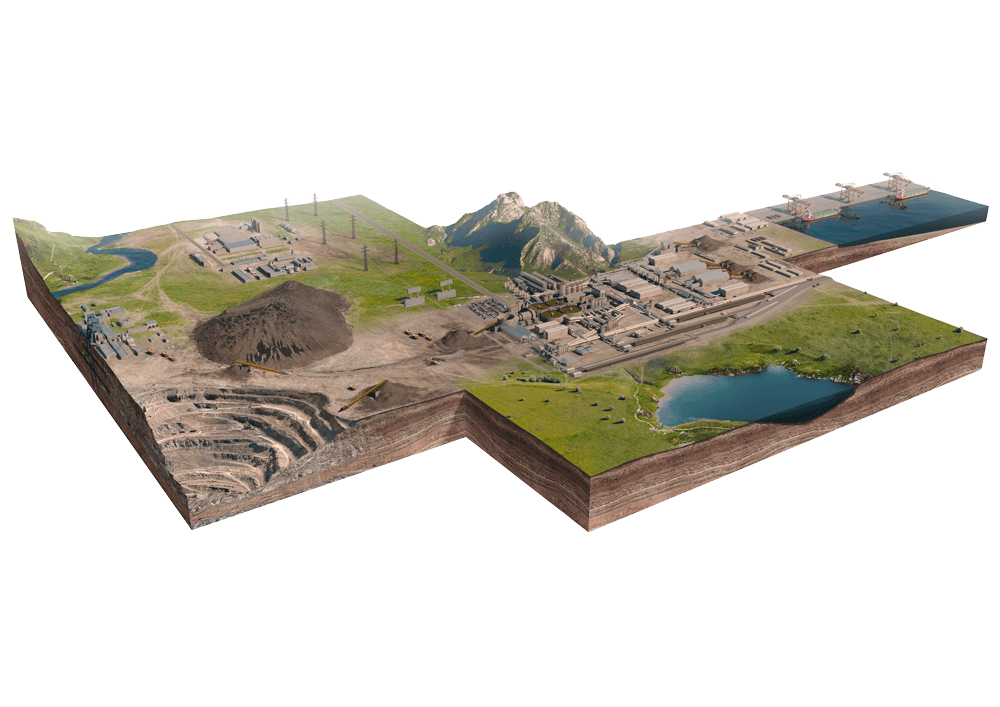
Enterprise optimisation results in a single, integrated model that consolidates existing knowledge & data from disparate systems. The Whittle Enterprise Optimisation model uses:
- Detailed metallurgical recovery relationships & Activity Based Costing (ABC) to construct a “Net Value” model of the ore body.
- Theory of Constraints (TOC) to develop a comprehensive model of the entire system, concentrating on describing the real nature of the bottlenecks.
- Optimisation software (Prober-E) to identify strategies that increases the flow of Net Value through the bottlenecks in the system, to maximise the rate of cash generation.
As your data, knowledge & experience grows over time, so too will your Whittle Enterprise Optimisation model.
Click here to watch a video explaining Whittle Integrated Strategic Planning
“A unique approach to optimising project value & cash flow returns… this is well worth attendance & highly recommended.”
John Meyer, SP Angel, London
The 2-day Integrated Strategic Planning Seminar comprehensively explains the philosophy & methodology of Whittle Integrated Strategic Planning. It includes an explanation of the process involved & the benefits derived from developing a Whittle Enterprise Optimisation model. The seminar presents a framework for cross-functional business collaboration which can be extended to all stakeholders. The ideal approach is for senior managers from all business disciplines to attend the seminar together. Participation in the seminar is either a final step in deciding whether to embark on an Enterprise Optimisation study, or the first step in doing it. Since it’s conception in 2009, over 3,000 participants have attended the seminar worldwide.
Click here for information on upcoming dates & watch our seminar videos
- The Integrated Strategic Planning seminar (2 days) – this seminar explains the philosophy & methodology of Whittle Integrated Strategic Planning & the processes involved & the benefits derived from developing a Whittle Enterprise Optimisation model.
- Strategic Assessments (3-5 days) – a short exercise designed to discuss & explore the potential of Whittle Integrated Strategic Planning for your business.
- Activity Based Costing (ABC) & Theory of Constraints (TOC) analysis & design (2-5 days) – This project designs an integrated ABC & TOC model for your business.
- Enterprise Optimisation (typically 12-20 weeks) – a comprehensive study involving data collection, modelling, optimisation & analysis. Involves building of a Base Case optimisation model, an Optimised Case & finally, consideration of a variety of Scenarios tailored to your business.
- KPI/Management Reporting Information Systems (design & advice) – Whittle Consulting can participate, advise, lead or engage external partners, as required.
- Ongoing review & assessment – We can assist you to regularly review & update your Enterprise Optimisation model.
- Implementation support – Our network of alliance partners can assist with the implementation of your Enterprise Optimisation model.
Click here to download a copy of our Service Offering brochure

Mining businesses have many reasons for exploring Whittle Integrated Strategic Planning. Some of the most common objectives include to:
- Improve cash flow
- Increase Net Present Value (NPV) of a project or operation
- Support Pre-feasibility Studies (PFS) & Feasibility Studies (FS)
- Guide investment decisions
- Raise finance
- Achieve sustainable operations
- Respond to market & contextual changes
- Perform due diligence (DD) &/or validate current plans
- Design management processes & systems
- Focus Big Data
- Identify bottlenecks & leverage points
- Embrace complexity
- Enable Business Improvement (BI)
- Rescue distressed assets
- Harness innovation
Click here for detailed explanations for each objective & outcome
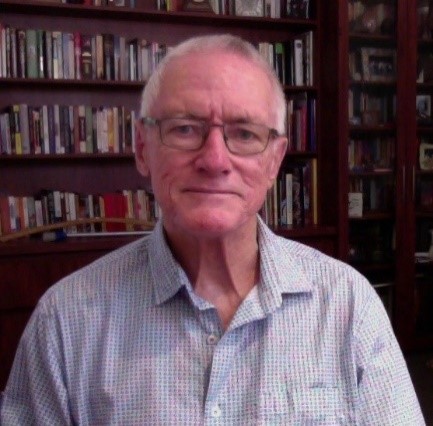
The story of mine optimisation is a tale of trial, error & endeavour. As a mining advisor, Doug Stewart was one of the first “early adopters” of Whittle software. His story outlines the evolution of mine optimisation since the 1960’s & the game-changing role that Jeff Whittle & Whittle software has played. He believes that when Jeff Whittle released Whittle Three-D in 1985 that he probably made the greatest value-add to the mining industry ever contributed by a single person.
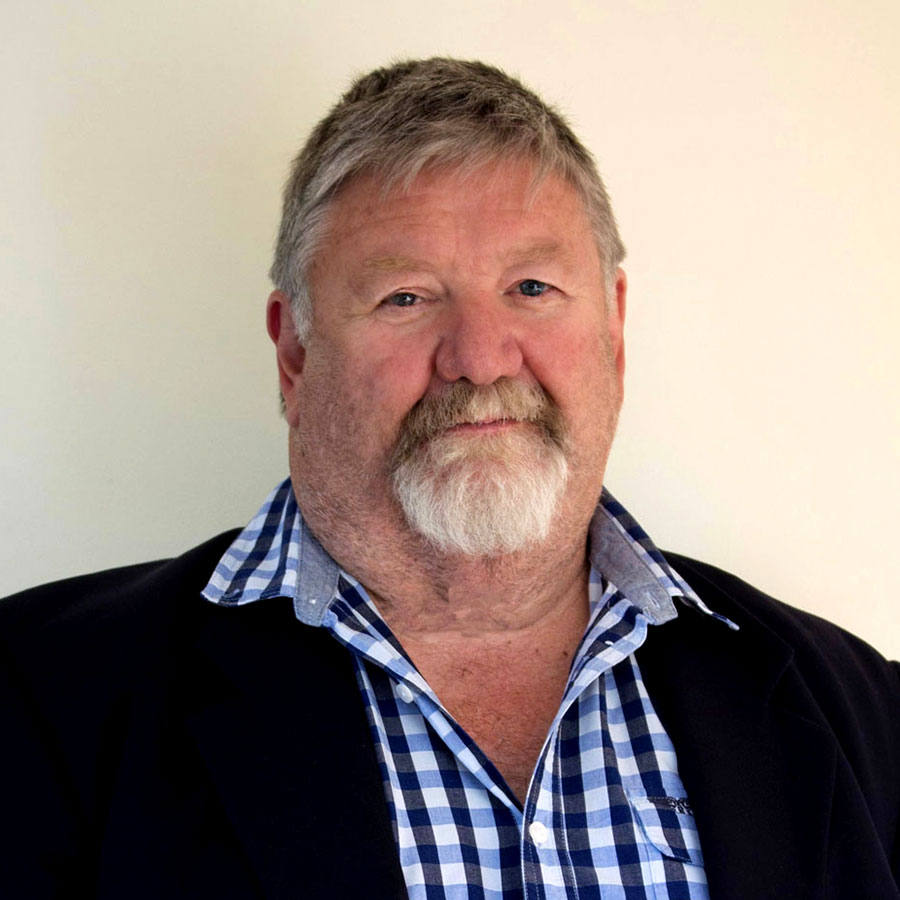
The early days of mining in Australia in the 1980’s was a heady time. Australia was a land of mining opportunity for those who had the nerve for risk. In this story, Norm Hanson tells of his work in the industry & how the introduction of new & novel ideas, like mine optimisation, were first introduced.
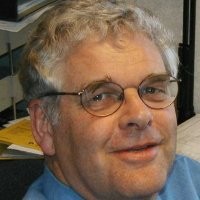
Whittle software has been at the forefront of the development of the modern mining industry. In this story, Richard Wooller, explains his first interface with Whittle Three-D & later Whittle Four-D in the late 1980’s. Whittle software has been invaluable in showing mining engineers how to get to the resource & civil engineers what to do with it once it was located!
Section 11
In Black & White
- 11.1 When your name becomes a verb – Computer Excellence 1991
- 11.2 Computer aided open cut mining – Tomorrow’s World 1993
- 11.3 Jeff Whittle says algorithm can help boost cashflow of mines – The Australian 2012
- 11.4 Mining Software, Jeff Whittle – International Mining Hall of Fame 2013
- 11.5 Surface Mine Production, Lerchs & Grossmann – International Mining Hall of Fame 2013
- 11.6 Surface Mining, Ken Lane – International Mining Hall of Fame 2016
- 11.7 An algorithm for the ages – CIM Magazine 2018
- 11.8 Glossary
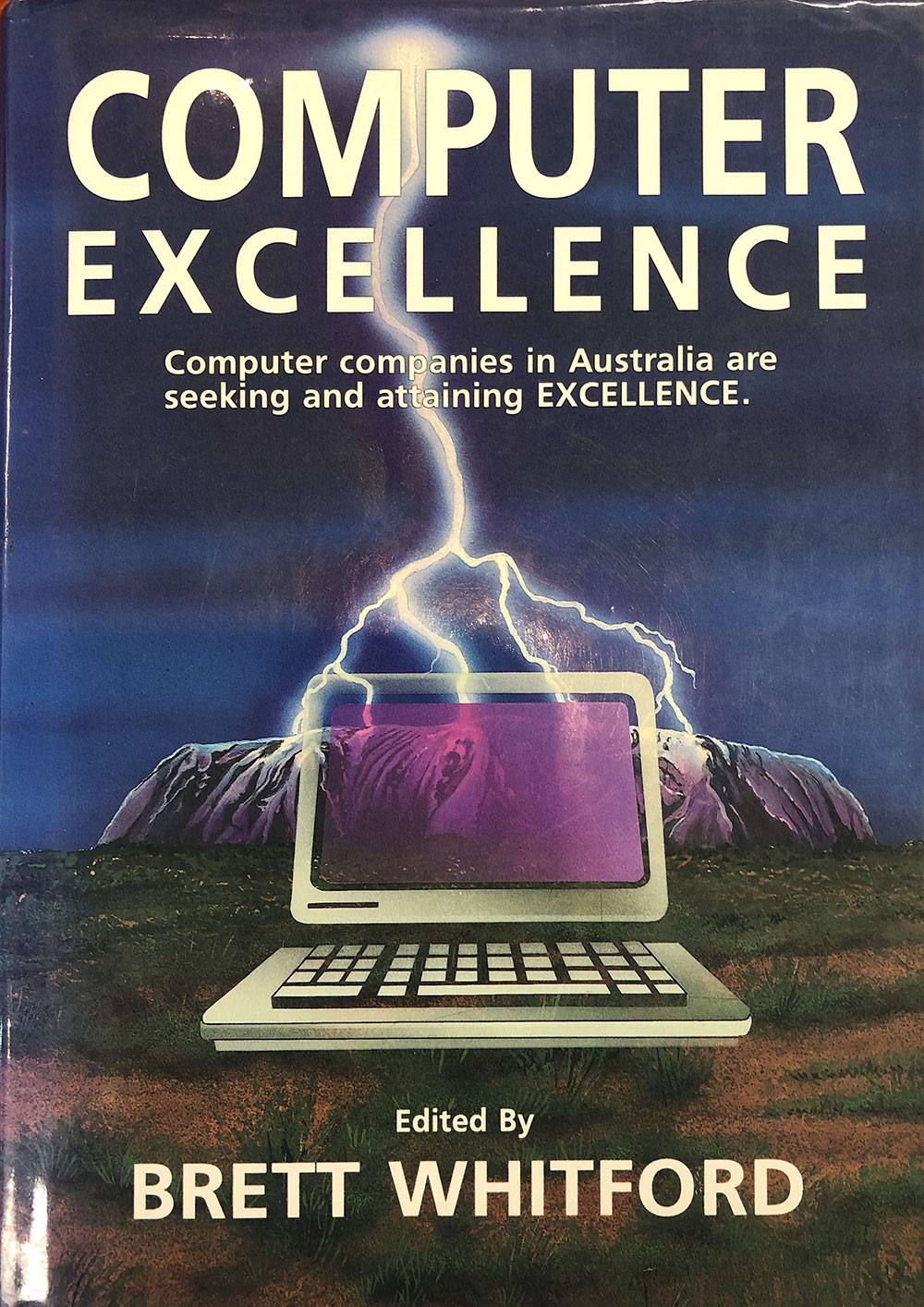
Edited by Brett Whitford, Beaumont Publishing House, Western Australia 1991.
In the chapter from this book, John Wilson interviews Jeff and Ruth Whittle and discusses their personal and professional history and the fantastic story of the development of Whittle Programming.
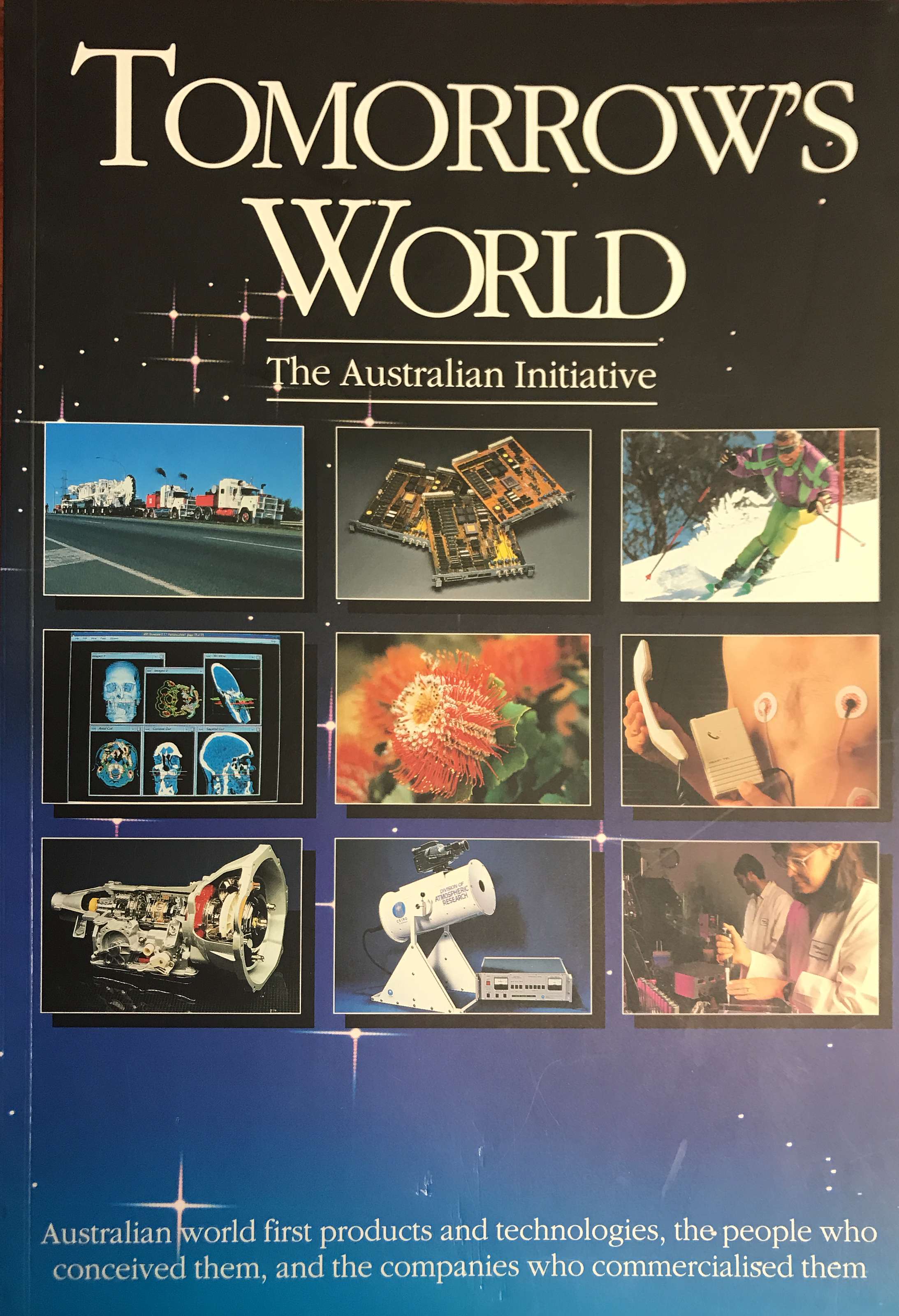
In 1993, the Australian government prepared a publication called Tomorrow’s World. The Australian Initiative. The publication was prepared to showcase to potential overseas markets, Australian world-first products and technologies, the people who conceived them, and the companies who commercialised them. Whittle Programming was delighted when both the company and the Whittle Four-D software was selected for inclusion in this publication.
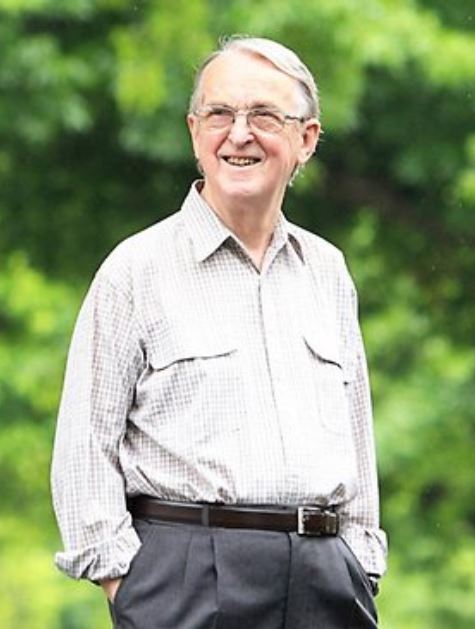
In this article, Jeff Whittle is interviewed by Blair Speedy from The Australian about how his mining algorithm can change the profit potential of the international mining industry.

In 2013, Jeff Whittle was inducted into the Hall of Fame for International Mining Magazine (IM). In the citation, Jeff was quoted as being a man who has had a revolutionary impact on the mining industry, especially as a being a pioneer of strategic mine planning
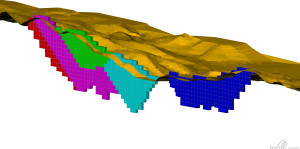 Maptek Vulcan Pit Optimiser
Maptek Vulcan Pit Optimiser
International Mining (IM) is a global publication covering mining and minerals processing technology, methods, equipment and service. Each year the publication honours individuals who have made significant contributions to the mining industry. In 2013, the publication honoured the contributions of Helmut Lerchs and Ingo Grossmann and their breakthrough algorithm used by Jeff Whittle in the development of Whittle software.
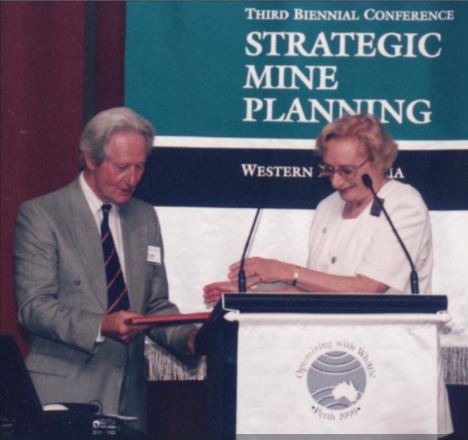 Ken Lane & Ruth Whittle 1999
Ken Lane & Ruth Whittle 1999
International Mining (IM) is a global publication covering mining and minerals processing technology, methods, equipment and service. Each year the publication honours individuals who have made significant contributions to the mining industry. In 2016, the publication honoured the contribution of Kenneth F. Lane. The work of Ken Lane was instrumental in the development of value-based mining optimisation, and in particular the field of cut-off grade.
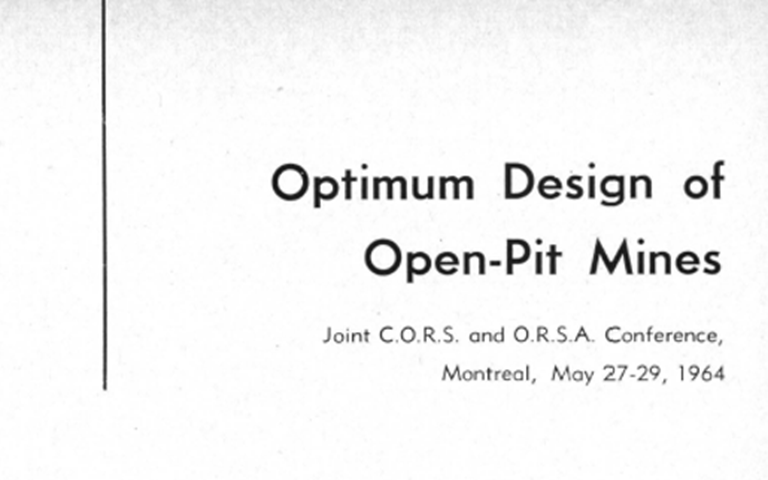
In this article, CIM Magazine acknowledges the role that the publication of the paper by Helmut Lerchs and Ingo Grossmann of their mine modelling algorithm entitled “Optimum Design of Open-Pit Mines” in the January 1965 edition of the CIM Magazine has played in the development of mine pit optimisation. It was this paper that sparked Jeff Whittle’s interest in mine optimisation and which ultimately led to the birth of a new and exciting era in international mining.

To assist you with mining optimisation terminology please CLICK HERE to view our glossary
Please email any written contributions, photographs or other content to info@whittleconsulting.com.au
The Whittle Story Live Book contains information about the history and development of Whittle Programming and Whittle Consulting. We believe each item included in The Whittle Story Live Book to be a true record of events. However, as the articles contained herein are personal records of historical events, these may vary due to differences in individual experience. The information provided is an attempt to record the corporate history for posterity and is not advice, and therefore should not be treated as such.

